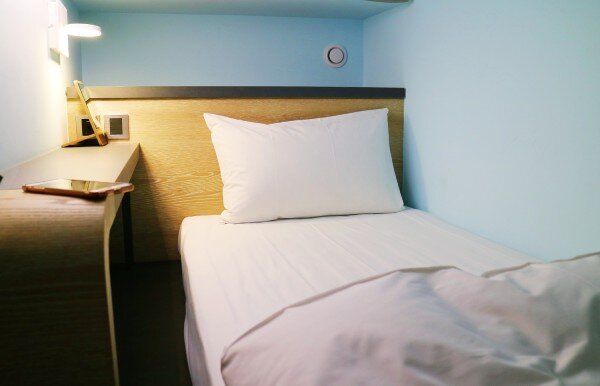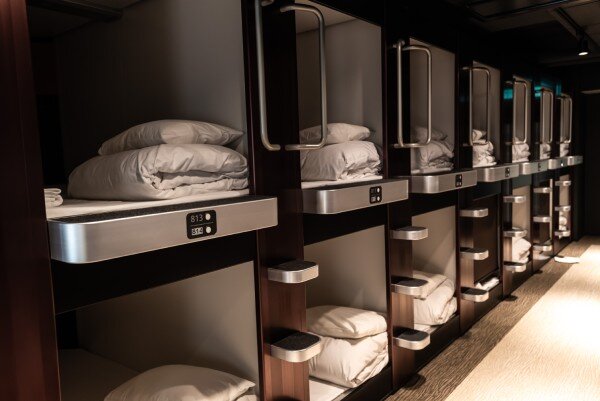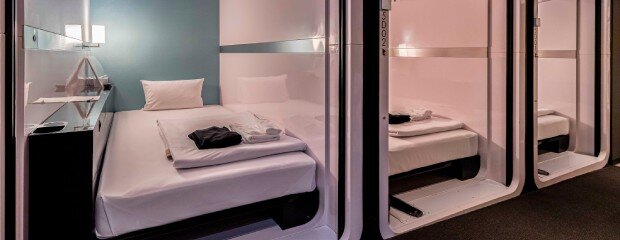Micro-hotels are just that, micro. Ever wondered as a kid what it would be like if your bed took up your whole room? Your guests can find out. These hotels can be a blessing for travelers on a budget and often come with unique setups, ranging from tiny rooms to capsules to repurposed sewer pipes (they definitely scrubbed them out first).
The market for micro-hotels is anticipated to grow to $150.43 billion by 2032. Here’s how to claim a slice of it and make your micro-hotel a success.
Emphasize the Novelty Factor
Micro-hotels aren’t what people are used to; they stand out and naturally become a significant part of your unique selling proposition. People get curious about things they haven’t done before, so use your marketing to make them curious about you. Stay the night in one of your rooms yourself to be able to describe what it feels like. (Doing this may also point you toward areas where you could improve.)
Think about the container for your micro-hotel. It doesn’t have to be a room (remember those well-scrubbed sewer pipes mentioned above?).
Theme can be a drawcard as well. Can you use it to entice a pre-existing fan group or audience? Imagine a micro-hotel decorated like a hobbit hole… with an option for second breakfast on the menu.
You can also take a local angle. What makes your city/region/country unique, and how can you emphasize it at your property? Try buying from local artists to decorate and offering local cuisine.
Think Through Your Design
Micro-hotels have less space, so you have to make the very best use of the space that you do have. Reflect on what you like around you when you go to bed—eyeglasses, phone, book, etc.—and make sure guests have a spot to put those things. Consider where their suitcase goes.
Just because your hotel rooms are smaller doesn’t mean they shouldn’t be nice. You’re going for small and striking, not small and stuffy. Because of their uniqueness, micro-hotels are naturally instagrammable. Keep the rooms clean and looking good to take advantage of this. Automated housekeeping management software (like that included with WebRezPro) makes this a breeze.

Choose Your Location Carefully
Micro-hotels are a strategic choice in large, popular cities where space is limited. They can offer an affordable option for both investors and guests in an expensive neighborhood.
Your price savings on a smaller building can be passed on to your guests, which enables you to access a wider market. (Though marketing to families still may not be your strong suit. No one wants to share a concrete tube with their toddler or, worse, their teenager.)
Create Communal Spaces
While guests in micro-hotels may not spend a lot of time on your property, you still need an appealing communal space where they can stretch their legs. Your lobby, cafe, spa, or rooftop bar can all serve this purpose.
Visit your existing communal spaces to get a feel for the vibe. Do you want to linger, or do you want to leave as fast as possible? If it’s the latter, you need a redesign. Think about the natural elements in that design. At the very least, indoor spaces should have plenty of windows to let in outside light.
Offer Quality Amenities
Just because the hotel is small doesn’t mean you don’t have to include the basics like Wi-Fi, phone charging stations, a wall-mounted flat-screen TV, and clean bathrooms. If bathrooms are communal, you need to pay particular attention to their presentation.
Be sure the bed/mattress is top-quality as well. It’s the most important feature (especially considering it takes up most of the room). If you’re using capsules, guests should be able to sit up at night without their heads going bonk.

Implement Efficient Processes
Running a micro-hotel means you don’t have much space (literal or metaphorical) for redundancies or slow operations. You need efficient processes for guests to make reservations, check-in, have their rooms cleaned, and address any concerns, which is where your property management system (PMS) comes in.
Your PMS should include an online booking engine so that you can a) accept direct bookings online and save yourself those OTA commission fees and b) prevent overbookings and other errors by synchronizing rates and availability across your systems.
Consider self check-in as well; it may not make sense to have a physical front desk. You can allow guests to pay online, complete digital registration before they arrive, and receive a digital key (via keypad code or mobile app) to enter their room—all without speaking with a clerk.
Whether guests stop by the front desk or bypass it altogether with self check-in, an SMS messaging integration with your PMS ensures that you and your guests can reach each other easily. Choose an SMS solution that is intuitive for guests and staff to use.
In fact, your PMS should integrate with many of your other software solutions to maximize efficiency. For instance, a point-of-sale (POS) system integration streamlines the process of posting restaurant or cafe purchases to guestrooms. When systems communicate with each other automatically, it eliminates the need for staff to manually double-handle data, saving time and reducing the risk of errors. (No one has time to retype everything during the morning rush.)
Reduce Your Carbon Footprint
With the effects of climate change catching up, sustainability is becoming a selling point.
According to Booking.com, 76 percent of respondents claimed that they would like to travel more sustainably in the next year (as of 2023). Having fewer square feet on your property means fewer square feet to heat, cool, etc., which means you’re already ahead, and it’s worth pressing this advantage.
Though people may be concerned about climate change, they’re also concerned about their wallets, with another 49 percent who say sustainable travel options cost too much. You’re in a position to allay their concerns here as well; lower square footage also means lower expenses, and you can pass the cost savings along (see above). You can market yourself as both sustainable and budget-friendly.
Consider how you can further increase your environmental commitment through features such as energy efficient lighting, reduced plastic use, low flow taps/toilets, and more.
Market on Social Media
Your novelty makes you instagrammable, so take those photos and post them on social media! Find out what social media channels your guests prefer and meet them there. To do this, you have to know what customer segments you appeal to (check the guest data in your PMS). And as always, promote your user-generated content. Guests trust other guests more than they trust your ad campaigns.
Micro-hotels are small but mighty! Use these tips to get your property ready to welcome guests and bring in a profit.

